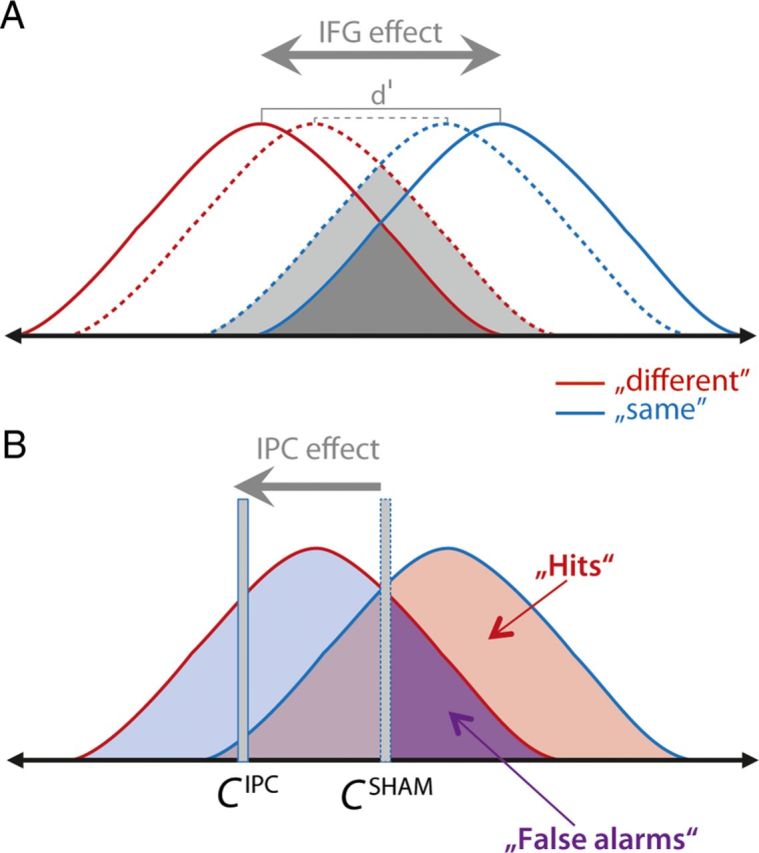Figure 7.

Sketch illustrating roles of IFG and IPC during perceptual learning of degraded speech. A, Conceptualization of the effect of tDCS over IFG for the most severely degraded items. Before training (dashed curves), the neuronal response to the auditory stimuli is noisy, as illustrated by broad overlapping response distributions and a comparatively small d′ (dashed gray line). Induced by training under IFG stimulation, the response distributions drift apart (solid lines), which signals enhanced categorical phoneme discrimination. Note that for the 2-band-vocoded words this effect relies on IFG facilitation. B sketches the effect of a change in the internal C as seen only during training with IPC facilitation for all vocoding levels. IPC facilitation induced liberalization of the criterion, yielding a near-optimal hit rate for identical pairs, at the expense of a grossly enhanced false alarm rate. The bias to integrate the acoustically degraded and the undegraded written word is a bias toward a unified percept. Such a bias may enhance perceptual learning when a larger-scale linguistic context (semantic, syntactic, or pragmatic) is supplied, but may not enhance the phonetic nucleus of perceptual learning of degraded speech.
